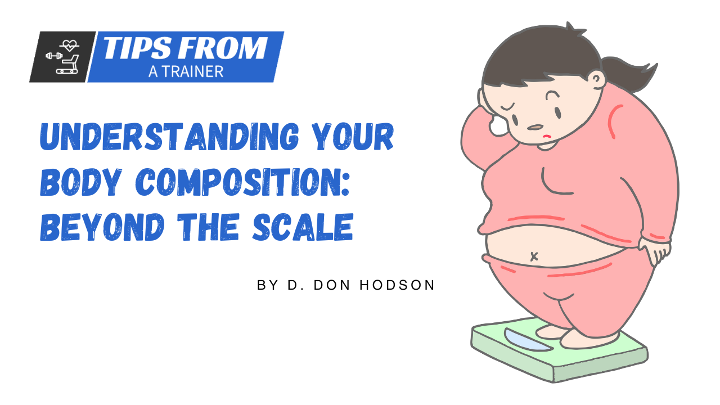Introduction
In a society that often places significant emphasis on weight and physical appearance, delving into the intricacies of your body composition offers a refreshing departure from the conventional focus on the numbers displayed on a scale. While weight can be a useful indicator, understanding your body composition provides a more nuanced and comprehensive perspective on your overall health and well-being. This article seeks to illuminate the multifaceted nature of body composition, going beyond the traditional metrics and exploring the diverse elements that contribute to the composition of your body.
Table of Contents
Introduction
The Basics of Body Composition
Defining Body Composition
Different Components of Body Composition
Importance of Measuring Body Composition
The Role of Fat in the Body
Adipose Tissue: More Than Just Energy Storage
Types of Fat in the Body
Health Implications of Body Fat Distribution
Muscle Mass: The Engine of Metabolism
Understanding Skeletal Muscle
Metabolic Benefits of Muscle Mass
Preserving and Building Muscle Through Lifestyle
Water Weight and Hydration
The Significance of Water in the Body
Factors Affecting Water Weight Fluctuations
Strategies for Optimal Hydration
Assessing Your Body Composition
Traditional Methods: Pros and Cons
Technological Advances: DEXA, BIA, and Beyond
Interpreting Results and Setting Realistic Goals
Beyond Numbers: Interpreting Your Results
Understanding Body Mass Index (BMI)
Waist-to-Hip Ratio: Insights into Health Risks
Body Composition Changes Over the Lifespan
Conclusion

The Basics of Body Composition
Defining Body Composition
Body composition refers to the intricate proportions of various tissues and substances that collectively constitute your body's structure. Unlike a simplistic measure of weight, body composition takes into account the distribution of different components within your body. These components include, but are not limited to, fat, muscle, bone, and water. This holistic view provides a more insightful understanding of your physical state and health.
Different Components of Body Composition
Your body is a remarkable amalgamation of distinct tissue types, each with its unique role and significance. Essential fat, for instance, is more than just an energy reservoir; it is crucial for numerous physiological functions such as hormone regulation and insulation. Lean tissues like muscle and bone contribute to your body's strength, mobility, and overall functionality. Together, these diverse elements create a dynamic and intricate framework that defines your body's composition.
Importance of Measuring Body Composition
Measuring body composition is a critical tool for gaining deeper insights into your health status. It enables a comprehensive evaluation of your body's proportions, shedding light on the distribution of fat and muscle mass. This assessment offers valuable information about your body's composition and can help identify potential health risks. Monitoring changes in body composition over time can also serve as a reliable indicator of the effectiveness of lifestyle modifications, such as diet and exercise. By going beyond weight and exploring the complex interplay of different components, you can make more informed decisions about your health and well-being.
The Role of Fat in the Body
Adipose Tissue: More Than Just Energy Storage
Adipose tissue, commonly referred to as body fat, is a complex and dynamic organ that serves several critical functions beyond its role as a source of energy storage. Adipose tissue plays a key role in regulating hormonal balance within the body. It secretes hormones called adipokines that influence various physiological processes, including metabolism, immune response, and inflammation. These hormones help maintain the body's overall equilibrium and contribute to its ability to respond to external stressors.
Furthermore, adipose tissue serves as an essential insulating layer, helping to maintain body temperature and protect vital organs from physical trauma. It acts as a cushion, preventing injuries to sensitive structures and promoting their proper function. Additionally, adipose tissue provides mechanical support, particularly in joints, by distributing pressure evenly and facilitating smooth movement.
Types of Fat in the Body
There are two main types of body fat: subcutaneous fat and visceral fat. Subcutaneous fat is the fat that lies just beneath the skin. It serves as a valuable energy reserve and plays a role in regulating body temperature. However, excessive accumulation of subcutaneous fat, especially around certain areas such as the abdomen and thighs, is associated with increased health risks.
Visceral fat, on the other hand, is stored within the abdominal cavity, surrounding internal organs such as the liver, pancreas, and intestines. Visceral fat is metabolically active and produces substances that can lead to inflammation and insulin resistance. Its accumulation is strongly linked to various chronic conditions, including type 2 diabetes, cardiovascular disease, and metabolic syndrome. The distribution of fat in the body, particularly the proportion of visceral fat, is a crucial determinant of health and disease risk.
Health Implications of Body Fat Distribution
The distribution of body fat can have profound implications for overall health. Central obesity, characterized by excess fat accumulation around the abdominal area, is associated with an increased risk of chronic diseases. The close proximity of visceral fat to internal organs means that it can release inflammatory substances directly into the bloodstream, contributing to a state of chronic low-grade inflammation.
This inflammation can disrupt insulin sensitivity and lead to insulin resistance, a hallmark of type 2 diabetes. Additionally, the accumulation of visceral fat is closely linked to dyslipidemia (abnormal lipid levels) and hypertension (high blood pressure), both of which are risk factors for cardiovascular disease.
It is important to note that body fat distribution can vary based on factors such as genetics, sex, and hormonal changes. While some individuals may naturally carry more fat around their abdomen, others may store it more evenly throughout their body. Understanding your body's fat distribution pattern can provide valuable insights into your health and guide targeted interventions to reduce disease risk.
With a comprehensive understanding of the various roles that body fat plays in the body, you can appreciate the complexity of its functions beyond its role in energy storage. Recognizing the significance of adipose tissue and its impact on health underscores the importance of adopting a holistic approach to body composition assessment and management.
Muscle Mass: The Engine of Metabolism
Understanding Skeletal Muscle
Skeletal muscle is a remarkable and versatile tissue that is responsible for a wide range of functions essential to human movement and physiological well-being. Comprising nearly 40% of total body weight in the average adult, skeletal muscle plays a pivotal role in mobility, posture, and overall metabolic activity.
Skeletal muscle is a voluntary muscle type, meaning it is under conscious control. It is attached to bones via tendons and is responsible for generating the force required for movement and stability. Through its contractile properties, skeletal muscle enables the execution of everyday tasks such as walking, lifting, and even the simple act of breathing.
Metabolic Benefits of Muscle Mass
One of the most remarkable attributes of skeletal muscle is its capacity to contribute to overall metabolic health. Muscle tissue is highly metabolically active, meaning it consumes a significant amount of energy even at rest. This energy expenditure, often referred to as the resting metabolic rate (RMR), is influenced by the amount of muscle mass an individual possesses.
Maintaining and increasing muscle mass can have a substantial impact on energy balance and weight management. Individuals with a higher proportion of muscle mass tend to have a higher RMR, which can contribute to more effective weight control. Additionally, muscle tissue plays a critical role in glucose metabolism. It aids in the uptake and utilization of glucose, helping to regulate blood sugar levels and reduce the risk of insulin resistance and type 2 diabetes.
Preserving and Building Muscle Through Lifestyle
Preserving and building muscle mass is an essential aspect of maintaining optimal health and body composition. Regular physical activity, particularly resistance training and weight-bearing exercises, is a powerful strategy for stimulating muscle growth and preventing muscle loss that can occur with age.
Adequate protein intake is equally important, as protein serves as the building block for muscle tissue. Consuming an adequate amount of high-quality protein from sources such as lean meats, dairy products, legumes, and plant-based alternatives can support muscle repair and growth.
Moreover, engaging in a balanced and nutritious diet that meets your energy needs while providing essential nutrients ensures that your muscles have the necessary resources to function optimally. Proper hydration is also vital for muscle health, as water facilitates nutrient transport and waste removal within muscle cells.
## 5. Water Weight and Hydration
### 5.1 The Significance of Water in the Body
Water is a fundamental and indispensable component of the human body, accounting for a substantial proportion of our total body weight. Its presence is vital for numerous physiological processes that sustain life. Water serves as a universal solvent, facilitating chemical reactions, nutrient absorption, and waste elimination. Additionally, it plays a crucial role in maintaining body temperature through processes such as sweating and heat dissipation.
Intracellular water, which is found within cells, helps regulate cell volume and supports cellular functions. Extracellular water, located outside of cells, aids in transporting nutrients and oxygen to cells while removing waste products. Adequate hydration ensures the proper functioning of bodily systems, including the cardiovascular, digestive, and nervous systems.
### 5.2 Factors Affecting Water Weight Fluctuations
Water weight, also known as fluid retention, can fluctuate due to various factors. Hormonal changes, especially in women during the menstrual cycle, can lead to temporary fluid retention. Sodium intake is another significant influencer of water balance; high sodium consumption can cause the body to retain excess water. Certain medical conditions, such as kidney disorders and heart failure, can also impact fluid regulation.
Environmental factors, such as heat and humidity, can contribute to fluid loss through sweating, which can affect short-term fluctuations in body weight. Conversely, excessive fluid intake without proper electrolyte balance can lead to diluted levels of sodium in the blood, a condition known as hyponatremia.
### 5.3 Strategies for Optimal Hydration
Maintaining optimal hydration levels is crucial for overall health and well-being. To ensure adequate hydration, consider the following strategies:
1. **Regular Fluid Intake:** Aim to drink water consistently throughout the day, rather than waiting until you feel thirsty. This helps prevent dehydration and supports optimal bodily functions.
2. **Monitor Sodium Intake:** Be mindful of your sodium consumption, as excessive salt intake can contribute to fluid retention. Opt for whole, unprocessed foods and reduce the use of high-sodium condiments.
3. **Balanced Electrolytes:** Electrolytes, such as sodium, potassium, and magnesium, play a role in fluid balance. Consume a balanced diet rich in electrolyte-containing foods, such as fruits, vegetables, and whole grains.
4. **Consider Activity Levels:** Adjust your fluid intake based on your activity level. Engaging in physical activity increases fluid loss through sweating, so be sure to hydrate before, during, and after exercise.
5. **Listen to Your Body:** Pay attention to your body's signals of thirst. Thirst is a natural indicator that your body needs fluids, so respond promptly.
6. **Choose Hydrating Foods:** Incorporate foods with high water content, such as fruits (watermelon, oranges) and vegetables (cucumbers, lettuce), into your diet.
7. **Limit Caffeine and Alcohol:** Caffeine and alcohol can contribute to dehydration, so moderate their consumption and balance them with water intake.
By understanding the significance of water in the body and adopting effective hydration strategies, you can help maintain fluid balance and support optimal bodily functions.
## 6. Assessing Your Body Composition
### 6.1 Traditional Methods: Pros and Cons
Traditional methods of assessing body composition have been widely used for many years. These methods often rely on simple measurements and calculations to estimate the proportions of various body components.
One common traditional method is the **Body Mass Index (BMI)**, which calculates the ratio of an individual's weight to their height. While BMI provides a quick and easy estimate of body composition, it does not differentiate between fat and muscle. As a result, individuals with higher muscle mass may be classified as overweight or obese, even if their body fat percentage is low. BMI is most useful when combined with other measurements to provide a more comprehensive assessment.
Another traditional method involves measuring skinfold thickness at various locations on the body. This measurement, known as **skinfold thickness measurement**, estimates the amount of subcutaneous fat beneath the skin. However, accuracy can be influenced by factors such as the skill of the person conducting the measurement and the equipment used.
### 6.2 Technological Advances: DEXA, BIA, and Beyond
Recent technological advances have introduced more sophisticated methods for assessing body composition with greater accuracy.
**Dual-Energy X-ray Absorptiometry (DEXA)** is a precise technique that uses low-dose X-rays to distinguish between fat, lean tissue, and bone mass. It provides detailed information about bone mineral density and can accurately estimate the proportions of different body components.
**Bioelectrical Impedance Analysis (BIA)** measures the resistance of body tissues to electrical currents. Different tissues, such as fat, muscle, and bone, conduct electricity differently. BIA estimates body fat percentage based on these electrical differences.
Other advanced techniques include **air displacement plethysmography** (commonly known as the Bod Pod), which measures body volume by analyzing the displacement of air in a chamber, and **MRI or CT scans**, which provide detailed cross-sectional images to accurately quantify fat and muscle distribution.
### 6.
## 7. Beyond Numbers: Interpreting Your Results
### 7.1 Understanding Body Mass Index (BMI)
Body Mass Index (BMI) is a widely used metric to assess an individual's body composition and health status. It is calculated by dividing a person's weight (in kilograms) by the square of their height (in meters). While BMI provides a convenient way to categorize individuals into weight classes, it has limitations when it comes to accurately assessing body composition.
BMI does not differentiate between fat mass and lean mass, which can lead to misclassification. For example, athletes with high muscle mass may fall into the overweight or obese category due to their weight, even though their body fat percentage is low. Conversely, individuals with a lower muscle mass and higher body fat may have a normal BMI.
Despite its limitations, BMI can offer a general indication of health risks associated with excess body weight. However, it is essential to consider other factors, such as waist circumference and waist-to-hip ratio, for a more comprehensive assessment.
### 7.2 Waist-to-Hip Ratio: Insights into Health Risks
The waist-to-hip ratio (WHR) is another valuable indicator of health risks associated with body composition. It involves measuring the circumference of the waist and hips and calculating the ratio between the two. WHR provides insights into the distribution of body fat, which can influence health outcomes.
Carrying excess fat around the abdominal area (central obesity) is associated with a higher risk of cardiovascular disease, diabetes, and other metabolic disorders. A higher WHR indicates a greater concentration of visceral fat, which surrounds internal organs and is linked to increased inflammation and insulin resistance.
A healthy WHR varies between males and females. For men, a WHR below 0.9 is considered healthy, while for women, a value below 0.85 is typically associated with lower health risks.
### 7.3 Body Composition Changes Over the Lifespan
Body composition undergoes natural changes throughout life, influenced by factors such as age, hormonal fluctuations, and lifestyle. Understanding these changes can help individuals make informed decisions about their health and well-being.
During childhood and adolescence, the body experiences growth and development, with an increase in bone mass and lean muscle tissue. However, with age, especially after the age of 30, muscle mass tends to decline gradually, a phenomenon known as **sarcopenia**. Sarcopenia is associated with decreased strength, mobility, and metabolic rate.
Additionally, hormonal changes, such as the decline in estrogen during menopause, can contribute to a shift in fat distribution, leading to an increased accumulation of abdominal fat in women. This change is linked to an elevated risk of chronic diseases.
Maintaining an active lifestyle, engaging in regular strength training, and consuming adequate protein are essential strategies to counteract the loss of muscle mass and prevent unfavorable shifts in body composition as you age.
Conclusion
TIn conclusion, understanding your body composition goes beyond a number on the scale. It involves recognizing the intricate balance of fat, muscle, water, and other components that collectively shape your health. By gaining insights into your body composition, you equip yourself with valuable information to make informed decisions about your well-being.
This comprehensive exploration of body composition has highlighted the diverse roles of fat and muscle, the importance of hydration, and the significance of accurate assessment methods. Through advancements in technology and a deeper understanding of health indicators like BMI and WHR, you can navigate your wellness journey with precision.
Embrace the knowledge that your body composition evolves over time, and by making conscious choices, you can maintain a healthier composition that contributes to your overall vitality. Remember that understanding your body composition empowers you to look beyond the scale, pursue optimal health, and lead a balanced and fulfilling life.

Don Hodson, Certified Personal Trainer
I'm Don, an ACE-certified personal trainer and the founder of Tips From A Trainer. With my passion for fitness and years of experience, I've helped countless individuals transform their physiques!
Having personally overcome weight challenges throughout my life, I understand the struggle. Through consistency, exercise, and a balanced diet, I have managed to stay in shape and I want to share my message with the world!
The fitness industry is fraught with misconceptions and deceptive practices, which is why I am committed to providing you with the truth.
- My Site: www.Don-Hodson.com
- My Company: www.ConnectedAgeMarketing.com

Understanding Your Body Composition